2022 Board Books: Some Delights So Far
You know, I don’t often get requests for round-ups this early in the year, but I know some of you folks love board books just as much as I do, and 2022 has produced a veritable bumper crop of the little beauties! I’m the kooky lady in the library lunch room with a pile of board books sitting on the table, eating her sandwich, reading literature for folks below the age of 1. That’s me. And while I enjoy summarizing everything during my usual 31 Days, 31 Books: Board Books list (here’s 2021, if you’re curious), no harm in giving you a sneak preview of what I’ve seen so far, eh?
Marvelous 2022 Board Books
Animals Move by Jane Whittingham
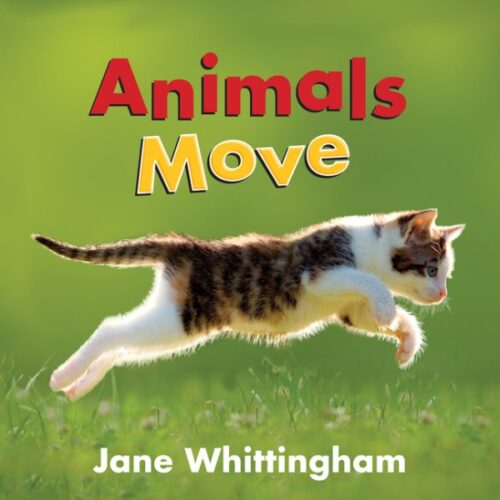
Photography! Baby animals! Now that’s the kind of board book I like to see. Though, come to think of it, “board book” isn’t a strictly accurate definition of the kind of book you’ll find here. This tough little book comes with reinforced pages that would be awfully difficult to rip and tear (though notice I didn’t say it would be impossible). On the endpapers you get these really nice photos of animals with their parents (the frog and tadpole one is particularly amusing since they’re rarely together in nature) and it lists what those babies are called. Then, as you go through the book, you watch each baby animal doing something on one page and kids doing those same things on the other. All Shutterstock photos, of course. Since the kids in the pictures are clearly preschoolers, this is possibly a title for slightly older littles. Still, I very much appreciate how thick those pages are. A good transitional book from board to picture book.
ADVERTISEMENT
ADVERTISEMENT
Babies Love Animals by Susanne König
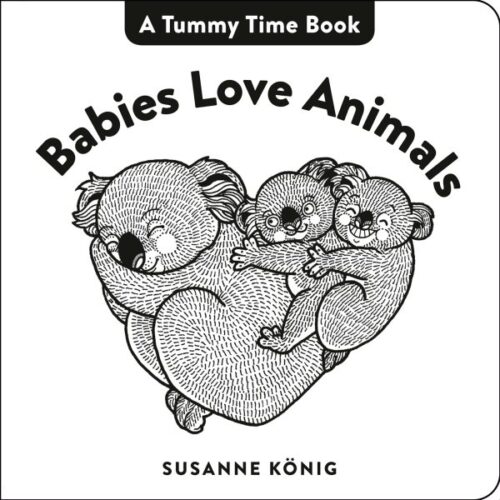
Just to clarify, if you make an accordion-style book in black and white with babies and the art is good, I’m going to be on board with all of that. I was honestly surprised to see that this book was coming out with Philomel. Why? Because I don’t usually see the big publishers taking the time and energy to create quality board books. I just don’t! They usually leave that stuff to the little pubs. And this one isn’t particularly groundbreaking or anything. It’s black and white images of animals in family units, their bodies in the shape of hearts. Some of the art is quite artistic and some is downright cartoony, but all of it is very pleasant en masse. Backgrounds alternate between black and white, and everyone in the pictures is very happy. One of the lovelier accordion books to come out. It was probably marketed a lot around Valentine’s Day, what with the hearts and all, but would work well in any home any time of the year. Bonus Fact: Susanne König is an acclaimed tattoo artist. Care for a heart shaped koala on your bum?
Bedtime for Duckling: A Peek-Through Storybook by Amelia Hepworth, ill. Anna Doherty
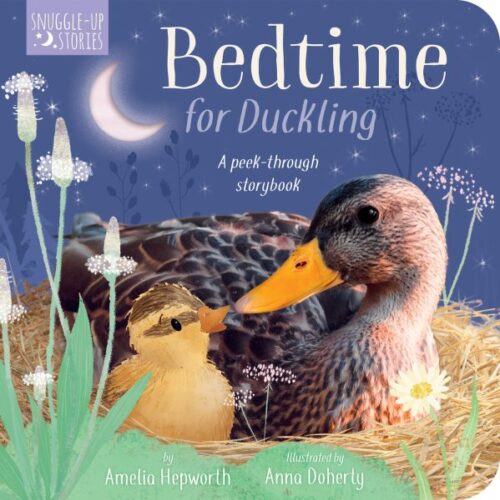
Small children love photography. Love it. Then, at some point, it gets downgraded in their books. Illustrations get precedence from then on. Me? I love illustrations but I love love photography. That’s probably why I find this otherwise innocuous series with Doherty integrating Shutterstock photos rather fascinating. You are in a completely illustrated world until you lift the flaps and discover the photographed animals underneath. Cool, right? Now, there was a book released in tandem with this one called Looking for Mommy. Why isn’t it on today’s list? I docked points for that when its “mommy” bunny was quite clearly a baby, and that’s just weird, folks. Duckling is clearly the superior title.
Bumblebee Grumblebee by David Elliot
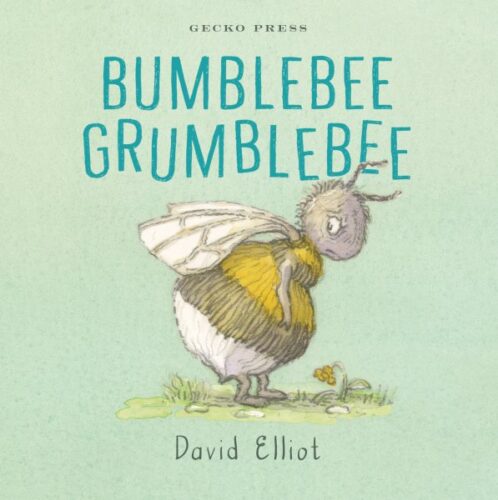
Okay, so this one definitely requires that the audience be a bit sophisticated to get what’s funny about the book. I consider this a kind of transitional title between board books and picture books. Its super simple concept is that you have a normal animal on one page, and then it does something that changes its name. So a “Buffalo” in the bath becomes a “Fluffalo” when it turns on a hair dryer. That’s cool, but what I really liked about the book was its end. After you’ve gotten used to the form, the last four pages go “Turtle”, with a turtle taking a hose. “Turtle?” as it gives you a cheeky grin. “Squirtle” as it starts hosing down everyone else in a final two-page spread. It’s hard to stress to you how difficult it is to write something this simple but also with a successful capper at the end. Sticking the landing in a board book is an art. David Elliot? A master.
Button! Snap! Zip! by Nicola Edwards, ill. Thomas Elliott
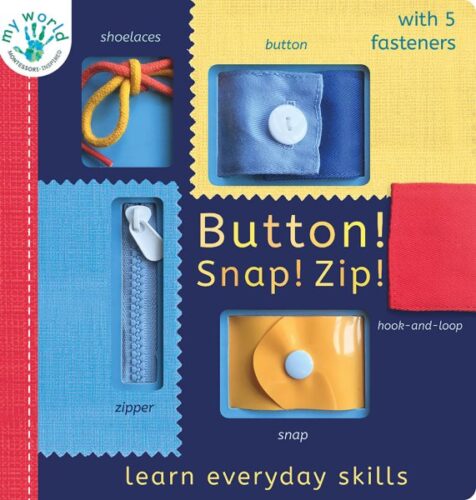
I’m a true sucker for a truly clever board book. This isn’t the first book to try and teach kids basic everyday skills, like how to button and unbutton or how to snap things, but it’s certainly one of the more sophisticated. Montessori-inspired, it calls itself a “fasteners book” and links itself to Montessori’s focus on “hands-on learning that engages imaginative young minds and helps children to reach their full potential”. Pretty neat. Of course, nothing in this life is perfect. If I had my way, the zipper portion would be less about simply moving the darn thing up and down (any baby could do that) and be more about fitting the bottom of a zipper into its necessary groove. THAT is where the frustrations come out, my friend. Even so, with its bright colors and wonderful photographs of little kids’ faces, this should be a necessary purchase for every preschool in the nation. As for libraries, nothing about this comes apart. I’m sure it’ll get a little grimy over time (what doesn’t?) but it appears to be plenty sturdy. Just remember to tie that shoelace before you put it away. 😉
Calm by Jillian Roberts, ill. Santi Nuñez
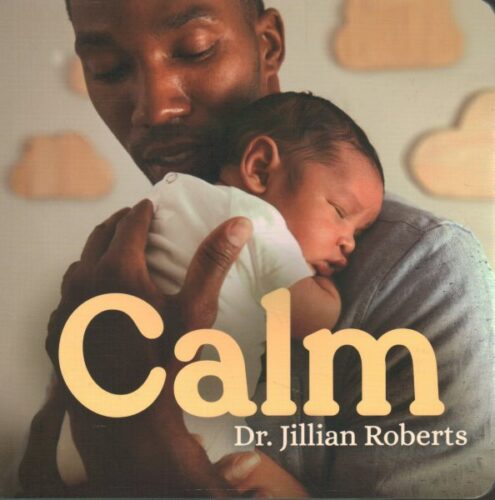
Any day you find a board book filled with photography is a day to celebrate! Awww. Just look at that cover photo too. The baby! So tiny! The book consists of a series of calming techniques for babies and toddlers, with appropriate photos with each. Are there faces? There are lots of faces. Are there emotions? Boy howdy there are emotions! And along the way there are also grandparents, and kids with parents of different races. There are kids of a wide range of ethnicities and just babies babies babies. Always a pleasure to see a book of this sort well done.
Crack-Crack! Who Is That? by Tristan Mory, translated by Wendeline A. Hardenberg
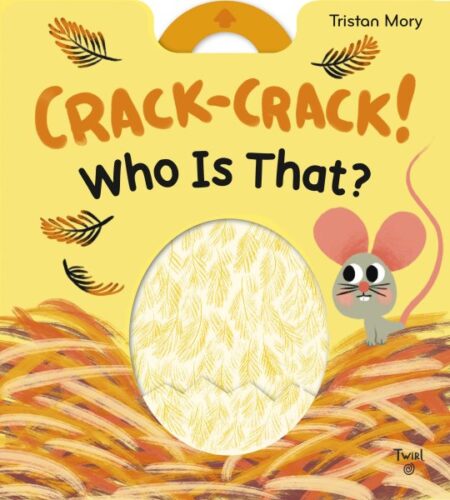
Look, I’m not made of stone, people. If you didn’t want me to fall in love with this board book then you shouldn’t have found a way to allow it to make cracking sounds every time you pull the (sturdy, easy to grab) tab. Different types of animals that emerge from eggs are revealed by the reader. Of course, if you want to get technical about it, I’m not sure that turtle or fish eggs actually crack when they open, but that’s neither here nor then. As a note, the book does end with an Easter egg cracking open, so don’t be too surprised when you get to that part. Interestingly, this is a French import as well. I suspect you’ll have trouble wrenching this from your babies’ hands, once they get ahold of it.
The Hair Book ill. Amanda Jane Jones
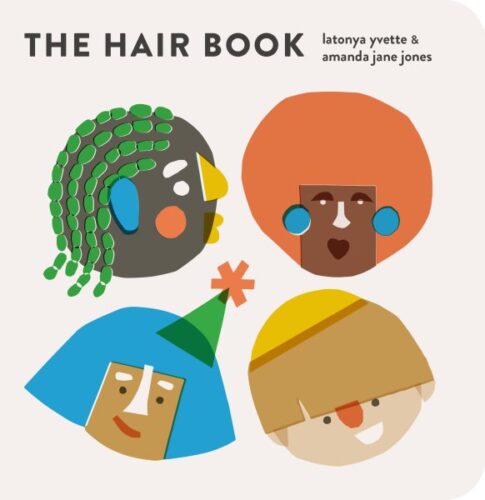
Simplicity. There’s a lot to be said for it. And there’s a lot to be said for the fact that The Hair Book is just that. A book o’ hair. It looks cool because it is cool. Now there are a lot of books out there that parade their inclusion like it’s a plot. This book doesn’t have to do that. It’s showing you hair on a wide variety of people and, occasionally, monsters. There’s nothing the least bit preachy about it. The art of Amanda Jane Jones is simple, brightly colored, and eye-catching. The text is supremely simple. Generally you’re going to just get two words per page. I dunno, I was fond of it. There’s just something open and honest about the whole endeavor. A book about hair. What else needs to be said?
How Big is Your Paw? Forest Animals by Kristin J. Russo
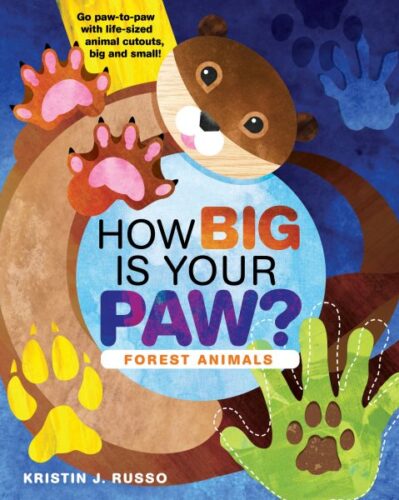
Am I the only one who sees this title and immediately starts singing, “How Deep Is Your Love” every time? Yes? Just me? Figured as much. Now this little board book has a lot of the same appeal as that old Steve Jenkins title Actual Size. It shows a range of animals’ paws, and you can compare how big they are to your own hand. So it starts out little (it’s really interesting that the smallest prints don’t always come from the smallest animals) and then grows to the point where your hand is pressing up against the prints of a bear and moose. Now a lot of the text pays the price of being too old for babies and preschoolers . . . but not all of it. There is, I noticed, a small part in darker print with simpler words that you could read to younger readers. The rest of it could be for their older siblings, hanging around, wanting to press their own grimy digits against the prints. Interactive and a lot of fun, I’m willing to forgive it its occasional loquaciousness.
I’m the Boss by Elise Gravel, translated by Charles Simard
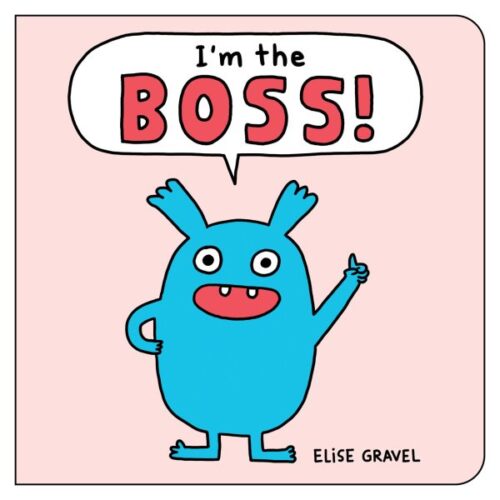
Repetition in service to humor. It’s a double edged sword. On the one hand the joke can wear thin after just a read or two. On the other hand, kids LOVE repetition, particularly that of the funny variety. Elise Gravel’s ace up her sleeve with this book is that she is, in fact, Elise Gravel. That’s a huge advantage to have. In this story a little blue, let’s say monster, named Lulu has informed the larger (and presumably adult) red monster that she is the boss. “Your job is to give me everything I ask for, okay?” She then proceeds to ask for any number of wildly outlandish requests. These range from chocolate castles to monkeys to garbage trucks and they always end with, “A big one! Right now!” When it finally becomes clear to Lulu that none of her demands will be forthcoming, the big monster asks if she’d like a hug. “A big one? Right now?” And that is precisely what she gets. A perfect combination of humor and heart.
I’m Up by Antoinette Portis
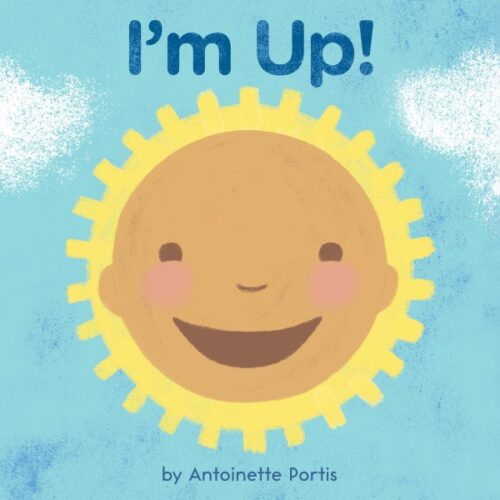
I’m Still Up by Antoinette Portis
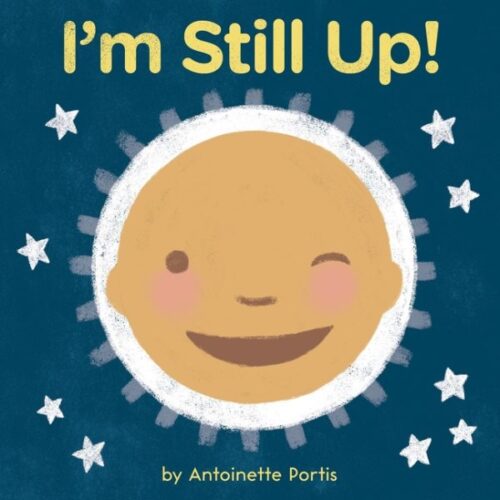
I find it impossible to separate these two books in any logical fashion. Seems to me that they’re a set, plain and clear. One lays the groundwork. The other pounds that groundwork to pieces with a shovel. By far one of the funniest concepts for the ankle biter set I’ve seen in a while (that wink on the cover of I’m Still Up just slays me). Portis is, of course, an old hand at this and you can trust that she knows how to write for young readers. I remember years and years ago when my (now fifteen-year-old) niece saw the book Not a Stick as a toddler and was rendered helpless with laughter at the concept. In these books there’s this wonderful marriage of the baby’s tufty hair and a bird or sun or moon or whatever it’s resembling. That round theme is so enticing to the eye, even as the text is just hilarious. You know how Bank Street College established a board book award last year? Baby, this better win ALL the things. It’s a masterclass on how to create the ideal board book. It really is.
The Itsy Bitsy Spider by Yu-hsuan Huang
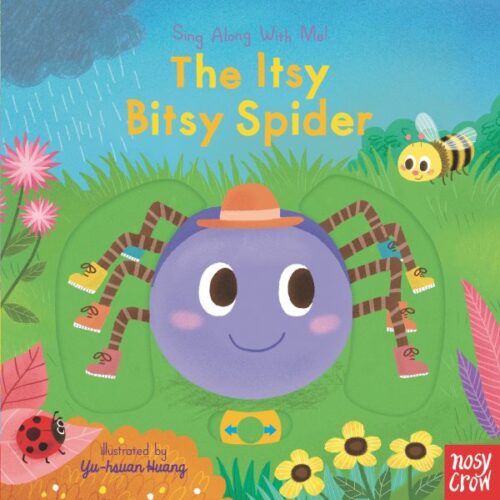
Look. I don’t want you to think I’m easy or anything. Like you can just make any old Itsy-Bitsy Spider board book and I’ll sign on instantly. Though, you have to admit, the length of the Itsy-Bitsy Spider song/hand rhyme is the perfect length for a board book. And then there’s the fact that if that board book knows precisely where to place the interactive elements, then it’s kind of a slam dunk no matter what. I’m going to have to research how many other Itsy-Bitsy Spider board books are even out there because as far as I can tell this is the first one I’ve seen to really utilize those push-up and moveable elements to their best effect (the only comparative title I can think of being Richard Egielski’s Itsy Bitsy Spider from 2012). It’s not a flashy board book. But for a storytime that involves both the hand rhymes and a separate staff member doing the book, I think you’d get some really good responses. Nosy Crown, man. That company knows how to make a board book work.
Me and My Mama by Carole Boston Weatherford, ill. Ashleigh Corrin
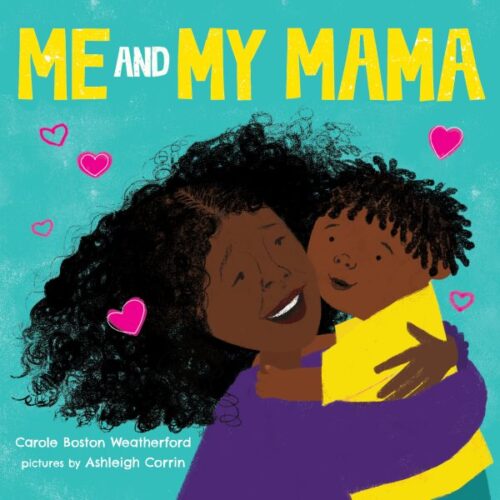
I can pinpoint the precise moment this book won me over. Trust me, I’m a tough reader when it comes to board books. It’s not enough to do the whole I-love-you-to-the-moon-and-back schtick, cute as that may be. But this book, which just outlines all the fun things you can do with your mama, has this moment early on that reads, “We spread my toys out on the floor / and shop for fun as if a store.” The mom is there with a variety of toys all around, and the kid, wearing bunny ears for no particular reason, has this fantastic face on, like he’s really and truly considering how good a deal he’s getting for that bouncy ball. Right then, I was sold. The rhymes work consistently, but it’s Ashleigh Corrin’s art that makes the entire enterprise sing. Maybe because she knows how to acknowledge the messiness of day-to-day life. Maybe because there’s a really inventive light and life to each of these pictures. Whatever the case, this book’s a real fun read and one you shouldn’t miss. Great stuff.
My Hands Make the World by Amalia Hoffman
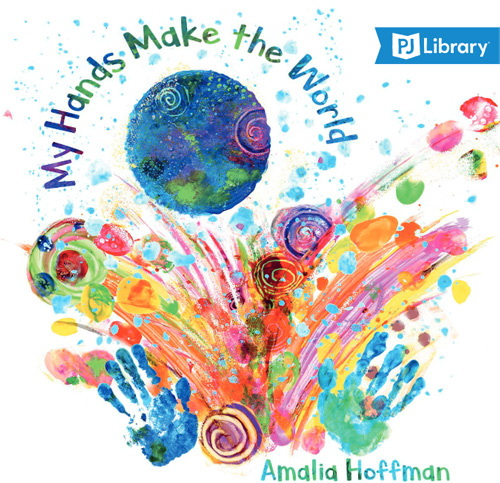
Well! I think it’s fair to say that I didn’t expect to see a Creation board book that actually, honest-to-goodness, works for little readers. Who knew it was possible? But Hoffman has just doubled down on the gorgeous paints in this, and it’s a stronger woman than I that could resist it. Its remarkably simple concept is probably why it works as well as it does. It’s written in the first person, and the story of Genesis almost equates the creation of the cosmos with the creation children do when they paint. “On the second day… My left hand made sky and clouds / My right hand made water.” There’s something distinctly satisfying about the way that these paints just pop off the page. It’s a book that looks like it was as much fun to make as it is to read. Finding books for this age range that touch on religious subjects and aren’t cloying or saccharin is an almost impossible task. At least there’s one book out there now to read with flair.
Night Night Sleepy Farm by Danielle McLean, ill. Gareth Williams
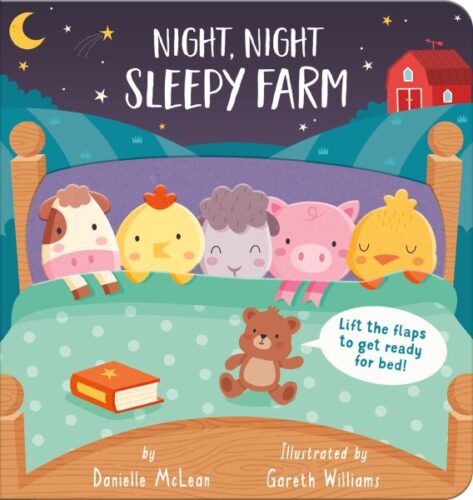
While I do fear that some of these sleepy little animals may lose their heads in the course of things, this lift-the-flap title gets extra points for innovative board book construction. I’m just scratching my head over the very logistics of this thing. Each animal is slightly in front of the ones behind it. That means that with every page turn you are sending that animal to bed. BUT there are also flaps that show what their bodies are doing after every activity on the right-hand side of the pages. Make sense? No? That’s because for something that looks so simple, Tiger Tales really buckled down and decided to make this book work. As I mentioned before, I cannot attest to its longevity, but at least at first it’ll be a neat title for your shelves.
Odd Birds: Meet Nature’s Weirdest Flock by Laura Gehl, ill. Gareth Lucas
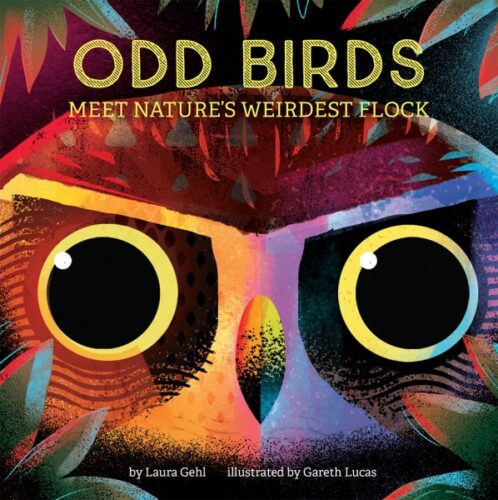
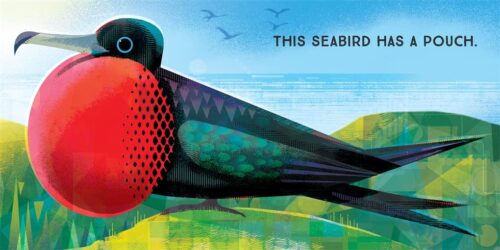
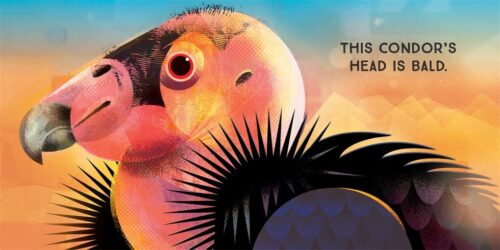
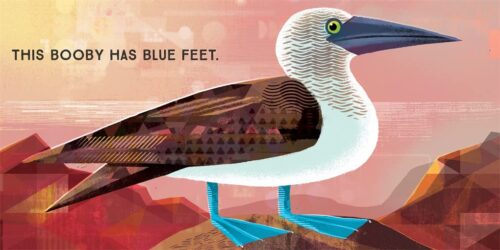
This book may be single-handedly responsible for my library rethinking its policies on not putting board books on our best of the year lists. Generally we don’t do it because at our location we don’t allow our board books to be put on hold. But this book, this amazing very young nonfiction book, it breaks ALL the rules. First off, it’s gorgeous as all get out. Gareth Lucas is just bending over backwards to make even those deeply ugly condors look like avian gods. The selection of the birds themselves is often surprising and interesting (I had no idea that oilbirds used echolocation). And THEN you get to the back of the book and see photographs of the real birds with facts for older readers. Did I mention that the text in the book is perfect for the youngest of kids? “A booby has blue feet”. If you get only one board book in your collection this year, make it this one. Seriously.
123 Zoom by Chiêu Anh Urban
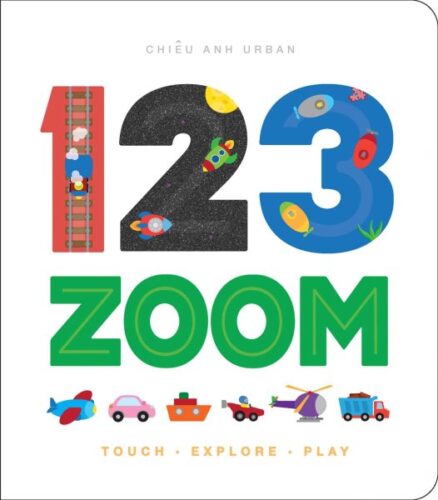
I literally cannot imagine the process that goes into creating an original board book. I suppose one of the first things you’d have to do would be to determine a need. In the case of 123 Zoom, maybe that need would be an understanding of not what a number is, but its tactile shape. That done, you’d have to give the reader a reason to trace those numbers. Say, because you’re following the flight or trajectory of different vehicles. And then there’s the question of how to direct the youngest of readers. Maybe little arrows that point out where you could begin. Oh! And don’t forget to make it feel kind of cool. Maybe the sides around the numbers could be raised a little bit. And if you threw in a seek-and-find aspect as well (perhaps a tiny package that’s being delivered?) that’s just the icing on the cake. And voila! You have yourself an honest-to-goodness original board book that’s a lot of fun for kids and adults alike. Whew!
Peek-a-You! by Andrea Davis Pinkney, ill. Brian Pinkney
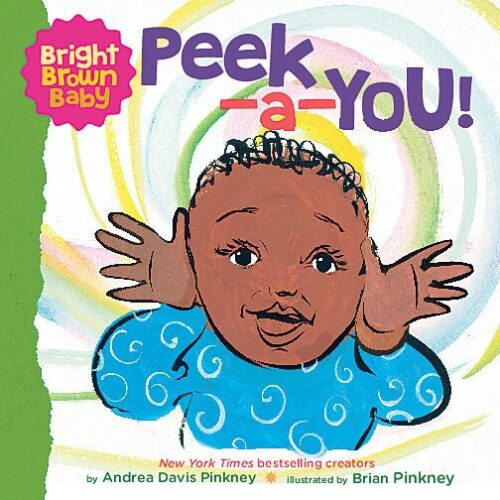
Further spin-offs from the Bright Brown Baby treasury the Pinkneys produced last year. May they produce as many board books as possible over the years. Even with the focus on the need for a wider range of representation in our literature for children, too often board books get left out in the cold. Brian Pinkney’s art is, as always, on point. The interesting thing about this book is that since it’s a peek-a-boo book, you’d think it would contain the industry standard mirror at the end. Not a bit of it. Now read the words again. What you find is that this book is actually about “mirrors” as in “windows in mirrors” ala the Rudine Sims Bishop definition. So when the book says, “Here’s the pretty brown face of ME!” you understand precisely the purpose of the book. More brown faces for babies to look at. Thank god.
Peekaboo House by Camilla Reid, ill. Ingela P. Arrhenius
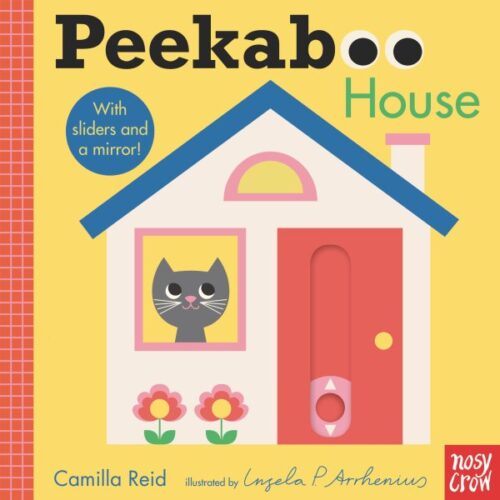
This isn’t my first ride on the Arrhenius board book bus, if you know what I’m saying. I’ve seen her work before and it’s always consistently strong. It can also get a bit same-y, though, so I didn’t walk into this expecting to be blown away. And I don’t think “blown away” was my final reaction, but I can say that I was quite impressed with the peekaboo elements in this book. The flaps and elements are strong and will hold up to repeated use. The rhymes work and do not cheat. A lot of what is on these pages will be familiar to a lot of kids. But the thing that really tips the balance for me is the final reveal. Mirrors in board books present any number of problems. But having the last one behind a full page covering that you pull away (and there was ZERO sticking when I did so on even the very first try), that’s really nice. A great example of solid construction that babies and toddlers will truly enjoy.
Rainy Days by Deborah Kerbel, ill. Miki Sato
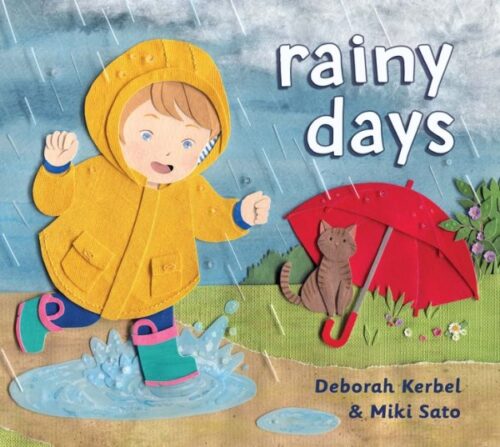
I cannot resist a clever bit of paper cutting, no matter how hard I want to. Of course, cleverness only gets you so far in this life. Without age appropriate, enjoyable writing, you could be as clever as you like and the book would still sink. This is one of those titles that have the poofy covers and then the thinner but incredibly difficult to rip or tear plasticy pages. You’ll appreciate their hearty quality since this book is bound to be a favorite each time a rainy day comes along. And, as a parent myself who indulged the outdoorsy whims of my own tots long ago, I appreciate lines like, “Freezing rain; we complain,” which shows a kid and dog INSIDE on a sleety nasty day. May it save many a fine parent from feeling obligated to tromp through that muck. Layered paper illustrations by Sato expertly provide the color you needs in a book with such gray skies.
Touch and Trace ABC by Harriet Evans, ill. Jordan Wray
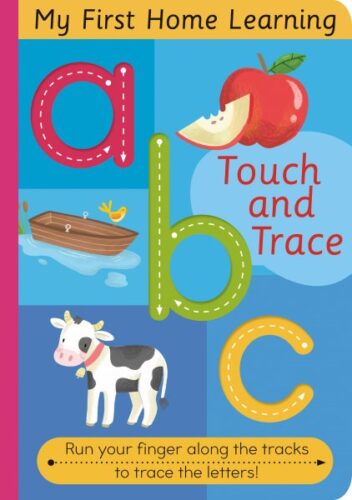
Touch and Trace 123 by Harriet Evans, ill. Jordan Wray
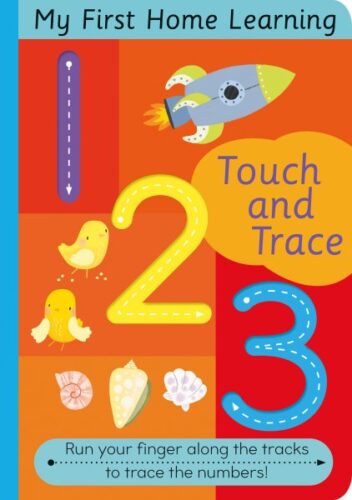
ADVERTISEMENT
ADVERTISEMENT
The fact of the matter is that you simply cannot have enough touch and trace books in this world. Holding these books in my hands, I can practically see the chubby little fingers being led up and down each letter and number. And I know I probably shouldn’t have favorites, but the numbers book is far and away the superior product. Not only do you get little numbers to trace at the end, but a whole host of simple math concepts as well. Too old for the babies and toddlers, sure, but maybe there’s an older kid lingering nearby that picks up on some of that. Couldn’t hurt!
Tummy Time! by Mama Makes Books
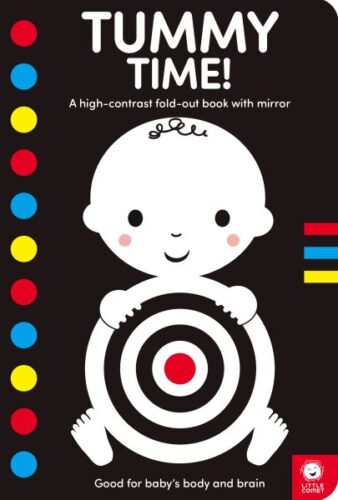
Red Comet Press isn’t playing around. Oh, you can have your simple accordion books all you want. This one’s cranking up the volume to 11. Basically, it’s going all all ALL in on baby brain development. And it isn’t just content to give you stuff for babies either. Right at the start you get this kickass statement to parents specifying PRECISELY how much babies can or cannot see developmentally. After that it shows thumbnails of all the images inside and asks, “Which image will excite your baby the most?” A worthy question since not only are we talking about high-contrast illustrations but also baby faces and even a mirror. Some of the pictures even give the babies little instructions that parents can do with them. “Happy Baby Touch your nose,” reads one. Boop! I’m always shocked we don’t see more books like this one on the market. A must for any new parent.
We Are Little Feminists: Celebrations by Brook Sitgraves Turner
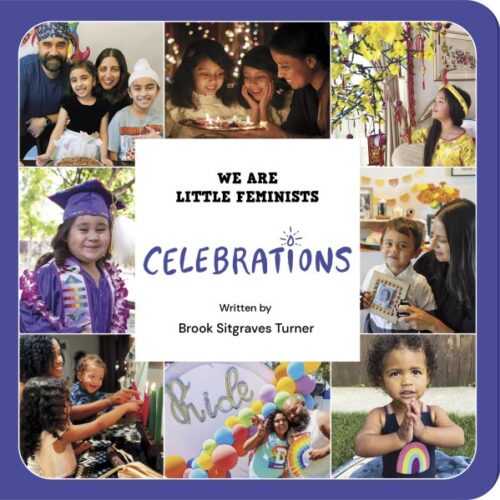
We Are Little Feminists: How We Eat by Shuli de la Fuente-Lau
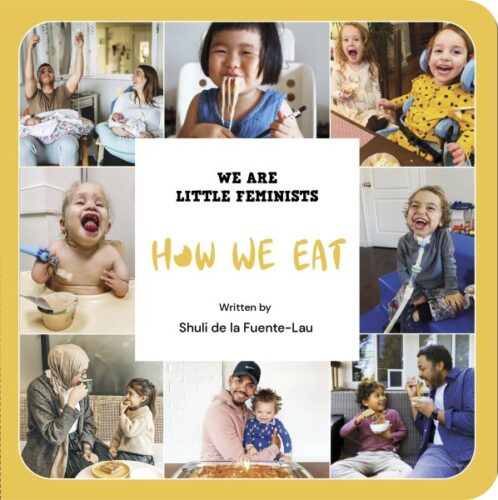
It was an upset like no other. The 2021 Youth Media Awards were being announced and we had just gotten to the Stonewall category. The Stonewall is awarded each year to “English-language works of exceptional merit for children or teens relating to the gay, lesbian, bisexual and transgender experience.” And typically that tends to be stuff on the upper end of the reading spectrum. A lot of YA. A lot of middle grade. Some picture books occasionally too. So imagine everyone’s surprise when the winner of the big Award proper went to We Are Little Feminists: Families by Archaa Shrivastav and designed by Lindsey Blakely. In other words a board book! A board book had actually won an ALA award. And while I’m no historian, I’m fairly certain that it was the very first time a board book ever won an ALA award (please feel free to correct me on this point if you know otherwise). This year, Little Feminist, the publishing house/children’s book club subscription agency, has two more board books for us. Board books that essentially wipe the floor with the photos-for-babies competition. Oh. You thought your board book was inclusive? Uh-huh. Well, lemme see here. Let’s look at How We Eat, where we’re not just showing innovative methods of breast feeding, spoons, and chopsticks but IVs, feeding tubes, ports, and more. Essentially, we’re normalizing the feeding process for everyone. As for Celebrations, powwows, pride parades, adoption days, and Obon make an appearance. On top of all that, the photos are really and truly magnificent. It’s like I say, Little Feminist sort of wipes the floor with the competition. Check out these books yourself if you don’t believe me.
What Do You See? by Renata Bueno, translated by Wendeline A. Hardenberg
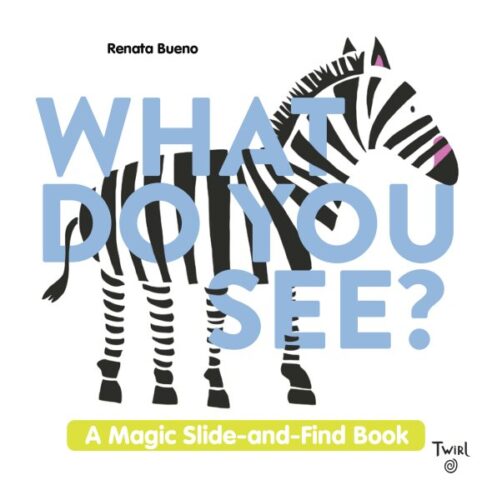
The French are back, baby! Used to be I could walk into the board book section of a library or bookstore and be flooded by the brand new board books from France that filled the shelves. Then, in the last few years, that flood turned to a trickle. I’m not sure how to account for the drop-off, but I do know that it’s always a delight finding new titles from that particular region of the world. I wasn’t familiar already with the work of Bueno, but Chronicle’s Twirl imprint rarely leads me astray. In this book you remove a “magic picture finder” from an inside pocket. Essentially it’s just opaque black lines on a piece of transparent plastic. You then place it over a picture strategically. Place it one way and you see one picture. Place it another and you see a different picture entirely. And that might be a cute gimmick alone, but what elevates the book for me is the fact that what you’re seeing in the second picture is a close-up of the first. So, you might see a camel in picture number one and then the hat that rests on the camel’s hump in the second. For a certain kind of kid, this may actually provide a great deal of fun. Just don’t lose that piece of plastic!
Filed under: Best Books of 2022
About Betsy Bird
Betsy Bird is currently the Collection Development Manager of the Evanston Public Library system and a former Materials Specialist for New York Public Library. She has served on Newbery, written for Horn Book, and has done other lovely little things that she'd love to tell you about but that she's sure you'd find more interesting to hear of in person. Her opinions are her own and do not reflect those of EPL, SLJ, or any of the other acronyms you might be able to name. Follow her on Twitter: @fuseeight.
ADVERTISEMENT
ADVERTISEMENT
SLJ Blog Network
Magda, Intergalactic Chef: The Big Tournament | Exclusive Preview
Fifteen early Mock Newbery 2026 Contenders
When Book Bans are a Form of Discrimination, What is the Path to Justice?
Poetry Gateways, a guest post by Amy Brownlee
ADVERTISEMENT







